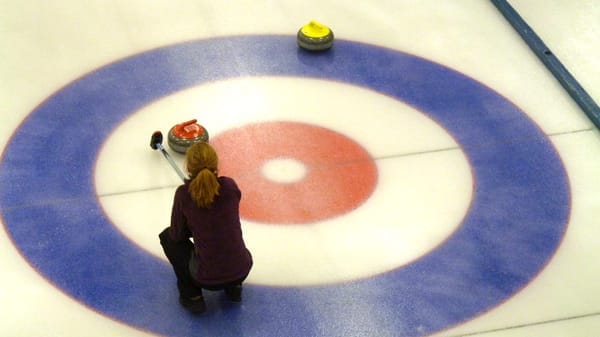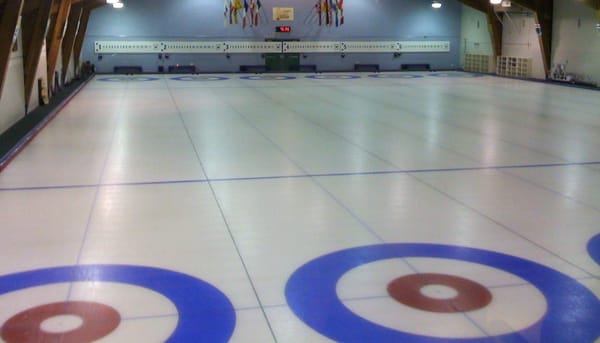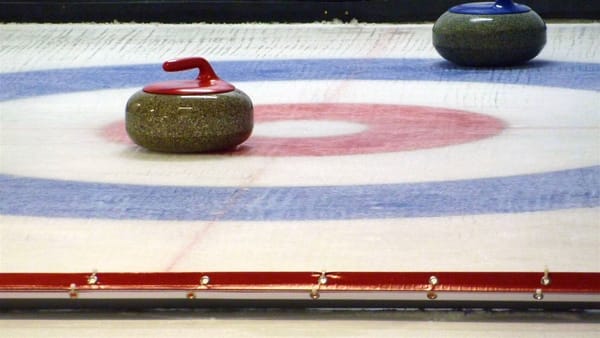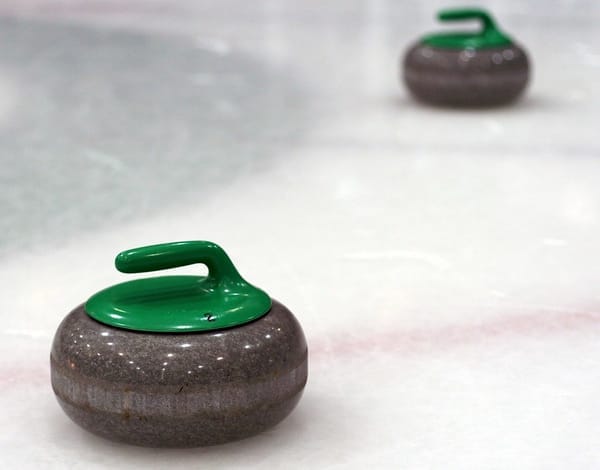The Physics Behind Curl

The curling stone's ability to curl as it glides down the ice has fascinated enthusiasts and scientists alike for many years. Understanding this curl involves exploring two primary theories: differential frictional melting and the effects of ice grooving or scratching. Each theory offers insights into the physical processes at play.
Theory #1: Differential Frictional Melting
One prominent explanation for the curling phenomenon is differential frictional melting. This theory suggests that variations in pressure on either side of the stone's running surface lead to uneven melting of the ice. When a stone rotates—such as clockwise as it moves forward—the left side travels faster than the right due to its rotation. This speed differential creates a pressure imbalance: the left side experiences greater pressure, resulting in increased frictional melting and a thin layer of water forming beneath it. This layer reduces friction, while the right side maintains higher friction due to lower pressure, causing the stone to "drag" and curve in the direction of the faster-moving side.
Several factors influence this process:
- Ice Temperature: Warmer ice enhances frictional melting, increasing the stone's curl.
- Running Surface Thickness: A thinner running surface can amplify pressure differences, leading to more pronounced curling.
- Pebble: The characteristics of the pebble can alter pressure distribution under the stone, impacting the degree of curl.
The Role of Sweeping
Sweeping plays a crucial role in this dynamic. While it does not increase the stone’s speed, it reduces its rate of deceleration, allowing the stone to travel farther. When sweepers engage, they create friction that melts a thin layer of ice, making the surface more slippery. This reduced friction affects both sides of the stone's running surface, diminishing the pressure differential and allowing the stone to travel straighter and farther overall.
Theory #2: Ice Grooving and Scratching
The second major theory focuses on the physical interaction between the curling stone and the ice. This perspective suggests that the rough surface of the stone creates scratches in the ice as it travels. These scratches align with the direction of the stone’s rotation and help guide the stone along a predetermined path. The angle and depth of these scratches are influenced by the stone's speed and rotation, thereby affecting the degree and direction of curl.
Comparing the Theories
Both theories present compelling explanations, yet each has unanswered questions. For instance, the differential frictional melting theory struggles to explain why stones with less rotation can curl more. Conversely, the ice grooving theory prompts inquiries about how rotation influences scratch angles and how different speeds affect the rate of deceleration for both the stone and its rotation.
Further research is essential to clarify these complexities and fully understand the interplay of forces that govern the curling stone's movement.
Additional Influences on Curling
Two additional phenomena can also significantly impact the stone's path:
-
Negative Ice: When the ice is uneven, gravity may counteract the expected curl, causing the stone to veer in an opposite direction. In such scenarios, sweeping might inadvertently enhance the curl as the stone follows the gravitational slope.
-
Drag Effect: Close proximity of stones can lead to a drag effect, where one stone affects the path of another. If two rocks are within a couple of inches of each other, the first rock's striking band can influence the direction of the second rock, depending on the thickness and roughness of its surface.
Conclusion
The physics behind the curl of a curling stone is a captivating interplay of multiple factors, including frictional dynamics, ice characteristics, and external influences. While theories like differential frictional melting and ice grooving offer valuable insights, the complete understanding of curling stone behavior remains a complex puzzle. As research continues, the curling community eagerly anticipates deeper insights into the intricate forces that contribute to this beloved sport's unique challenges.



